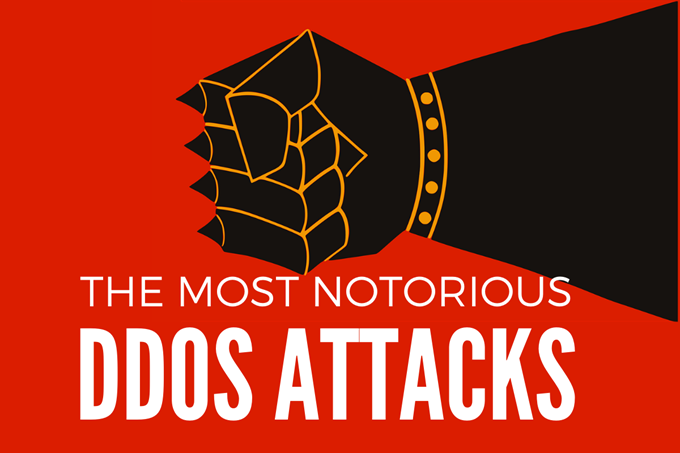Dissecting the Estonia DDoS Attack: A Technical Expedition into Cybersecurity's Core
 Prajoti Rane
Prajoti RaneTable of contents

Dissecting the Estonia DDoS Attack: A Technical Expedition into Cybersecurity's Core

Introduction: The Estonia DDoS (Distributed Denial of Service) attack of 2007 stands as a pivotal moment in the chronicles of cyber conflict, marking a significant escalation in the arena of digital warfare. This assault, orchestrated against Estonia's critical infrastructure and digital services, reverberated across the globe, illuminating the vulnerabilities inherent in modern cyber ecosystems. In this comprehensive analysis, we embark on a technical voyage to unravel the intricate layers of the Estonia DDoS attack, delving into its underlying mechanisms, propagation techniques, and the enduring lessons it imparts to the cybersecurity community.
The Prelude:
Contextualizing the Attack: The genesis of the Estonia DDoS attack can be traced back to a geopolitical conflagration ignited by a dispute over the relocation of a Soviet-era war memorial in Tallinn, Estonia's capital. Against the backdrop of simmering tensions with Russia, the cyber conflict erupted in April 2007, precipitating a barrage of digital assaults targeting Estonia's vital infrastructure and digital assets. The ensuing cyber onslaught laid bare the vulnerabilities of Estonia's interconnected digital ecosystem, underscoring the perils of asymmetric warfare in the digital age.

The Anatomy of the Attack: Technical Insights:
DDoS Onslaught: At the heart of the Estonia DDoS attack lay a relentless barrage of distributed denial of service (DDoS) assaults, orchestrated through a vast network of compromised devices known as botnets. By harnessing the collective computing power of botnets comprising thousands of hijacked computers worldwide, the attackers unleashed a deluge of malicious traffic aimed at overwhelming Estonia's internet infrastructure.
Botnet Orchestrations: The perpetrators of the Estonia DDoS attack leveraged a myriad of propagation techniques to enlist unsuspecting devices into their malevolent botnet army. Through the dissemination of malware-laden emails, exploitation of software vulnerabilities, and manipulation of insecure web applications, they recruited a diverse array of devices into their botnet ranks, priming them for coordinated attacks.
Amplification Techniques: To amplify the efficacy of their DDoS onslaught, the attackers exploited reflection and amplification techniques, capitalizing on vulnerabilities inherent in protocols such as DNS (Domain Name System) and NTP (Network Time Protocol). By coercing legitimate servers into unwittingly magnifying the volume of malicious traffic directed at Estonia's servers, they intensified the impact of their assault, exacerbating the disruption to critical services.
Application Layer Exploitation: In addition to volumetric attacks targeting network infrastructure, the Estonia DDoS attackers employed sophisticated techniques to exploit vulnerabilities at the application layer. By targeting weaknesses in web applications, such as SQL injection and cross-site scripting (XSS), they sought to compromise servers and disrupt online services at their very core, inflicting maximum damage and chaos.
IP Spoofing and Traffic Redirection: To obfuscate their origins and evade detection, the perpetrators of the Estonia DDoS attack employed tactics like IP spoofing and traffic redirection. Through the falsification of source IP addresses and redirection of traffic through compromised intermediaries, they obscured their digital footprints, confounding mitigation efforts and complicating attribution.
Mitigation and Aftermath: Lessons Learned: In the wake of the Estonia DDoS attack, cybersecurity stakeholders gleaned invaluable insights into the evolving threat landscape and the imperatives of cyber resilience. Key takeaways include:
Enhanced Defensive Measures: The Estonia DDoS attack underscored the urgency of fortifying critical infrastructure and digital services against DDoS assaults through the implementation of robust defensive measures, including traffic filtering, rate limiting, and the deployment of dedicated DDoS mitigation solutions.
International Collaboration: The incident highlighted the imperative of enhanced international cooperation and information sharing to counter transnational cyber threats effectively. Collaborative efforts among governments, law enforcement agencies, and cybersecurity stakeholders are essential to mitigating the impact of future cyber attacks.
Cyber Deterrence Strategies: The Estonia DDoS attack underscored the necessity of developing robust cyber deterrence strategies to dissuade malicious actors from engaging in cyber aggression. Through the cultivation of attribution capabilities, imposition of consequences for malicious cyber behavior, and cultivation of a culture of cyber resilience, nations can deter adversaries and safeguard the integrity of the digital realm.

Conclusion:
Navigating the Complex Terrain of Cyber Warfare: The Estonia DDoS attack stands as a sobering reminder of the profound implications of cyber warfare in an increasingly interconnected world. As adversaries continue to evolve their tactics and techniques, the imperative for nations and organizations to fortify their cyber defenses and foster resilience against emerging threats has never been more pressing. By leveraging advanced technologies, fostering international collaboration, and cultivating a culture of cyber vigilance, we can navigate the complex terrain of cyber warfare and safeguard the digital domain for generations to come.
Subscribe to my newsletter
Read articles from Prajoti Rane directly inside your inbox. Subscribe to the newsletter, and don't miss out.
Written by

Prajoti Rane
Prajoti Rane
Welcome to my Hashnode profile! I'm a cybersecurity beginner who is passionate about learning and exploring the world of cyber-security. I'm excited to share my journey with you and hope that you find my content informative and helpful.